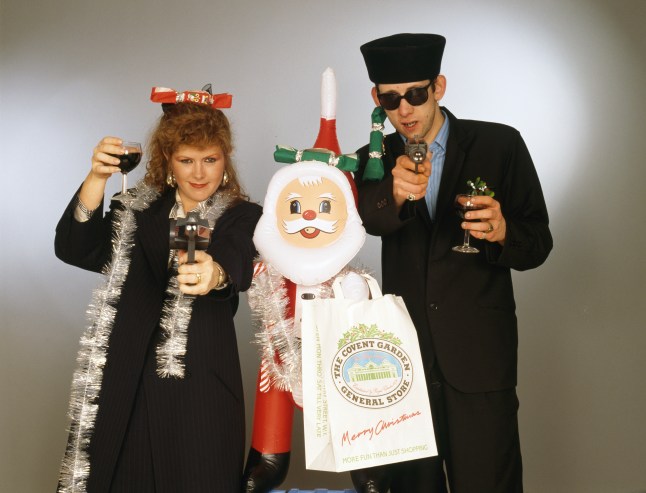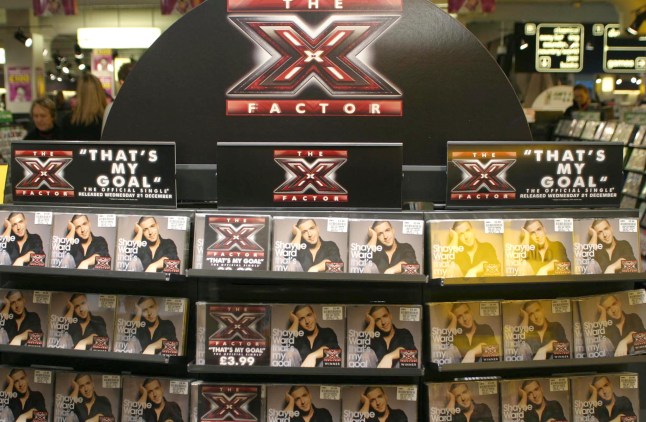
For millennials, certain things were just part and parcel of the nineties and noughties festive experience.
Gen Z may be the generation to avoid over-plucked brows and foundation lips but they’ll never know the feeling of flipping through the Argos catalogue to write your Christmas list or the rush when the Toys R Us ad came on TV.
And, most exciting of all, the mania that surrounded landing the coveted Christmas number one spot.
Gather round children to hear about a time long before streaming services and multiple music charts, when the nation would tune in weekly to watch Top of the Pops or listen intently to the radio top 40 chart countdown to hear what lucky acts had struck gold. And at Christmas, this fiercely competitive race for the top spot became a veritable feeding frenzy.
‘It was huge,’ Emma Usher, who worked across music content for the BBC in the nineties and helped book talent on Top of the Pops Saturday and Live & Kicking. tells Metro.co.uk.
‘The charts were a massive deal then and landing a number one at any time of the year was big for someone’s career. But the Christmas number one was in another league. The Top of the Pops festive special was the biggest show of the year and we’d fly bands in from other countries just to appear. Record companies would send us gifts and ring constantly to book acts on.’
‘Getting that Christmas number one spot back then was like winning the jackpot,’ Janey Lee Grace, a presenter on Virgin Radio in the nineties, told us. ‘It wasn’t just about the music, it was a cultural phenomenon. People would rally behind their favourite tracks, and it turned into this epic battle for the top spot. We had to be across it, try and get listeners involved, build up the excitement. It was like a marathon of festive music and crazy energy.’
The frenzy surrounding the Christmas number one can be traced back to 1973 when the first festive head-to-head saw Slade’s Merry Xmas Everybody win against Wizzard’s I Wish It Could Be Christmas Everyday.


Now there’s no denying that both songs are absolute classics but there’s something about Slade’s Noddy Holder screaming out ‘It’s Chrissstmaaas!’ that calls out to us like a festive foghorn.
It could be 30 degrees and sunny yet two seconds in and we’re balls deep in mince pies and a pint of Baileys. No? Just us?
Noddy admitted to bashing out the hit song, which is currently back in the top 40, after a night in the pub and the band performed across Europe to build up momentum. The race between the two bands became so competitive that when Slade scooped the Christmas number one, Wizzard snuck into the audience for their performance on TOTPs and pelted them with custard pies. They must have been pie-rate. Ahem.
Bookies quickly started to notice how much people enjoyed a Christmas flutter (minds out of the gutter) and released the odds for the number one single, which only amped up the excitement. In 1984, it seemed clear that Band Aid’s star-studded charity single Do They Know It’s Christmas – which is the best-selling Christmas number one to date – was going to win the race, so bookies took bets on the number two spot, which went to Wham’s Last Christmas.
Not every song had to be about Christmas specifically, of course. 1991 saw the number one go to Queen’s Bohemian Rhapsody, while 1992 went to Whitney Houston’s I Will Always Love You. And in 1994, East 17 somehow managed to convince the nation that an absolutely tragic love song was pure Christmas by singing in the snow in large puffas and layering some lovely festive bells over the top.
The 90s were arguably dominated by the Spice Girls, and the mania of Girl Power saw them land three consecutive Christmas number ones with 2 Become 1, Too Much and Goodbye.
Musical acts went out of their way to score the top spot and launched big campaigns to drive up sales of their single and convince fans they deserved to win. It was like a festive presidential campaign but with less twats and more tinsel.
‘Record companies made it their mission to book the bands or singers on every TV show they could,’ Jordan Paramor, who worked for Smash Hits magazine in the 90s, said. ‘There were so many music shows back then and a great performance really was reflected by sales. They’d get booked on everything and appear on radio shows to make their bid for the top spot. I also worked on the Smash Hits Poll Winners and I remember East 17 appearing the year they landed their Christmas number one. It was huge at the time and record companies would fall over for themselves for that level of exposure.’
Christmas lends itself to the weird and wacky. It’s a time when we bring trees inside our homes to decorate and let children sit on the laps of some random bearded bloke in a crushed velvet suit. So it’s no surprise that Brits showcased a love for the more comical acts too.
Who can forget when Mr Blobby’s self-titled anthem went to number one for Christmas 93? The pink legend went all guns blazing with a music video that saw him parodying Shakespears Sister and Robert Palmer and throwing a wild party with Jeremy Clarkson, Noel Edmonds and Carol Vorderman. Seriously guys, the 90s. You just had to be there.
Or how about when Neil Morrisey, aka of Men Behaving Badly fame, landed a Christmas Number one as the voice of Bob the Builder in 2000 and beat off stiff competition from Westlife and All Saints? Bob didn’t even bother performing on the Christmas Day Top of the Pops special, though. Because a true star always knows to leave their fans wanting more.

But like all good things, they must come to an end and many blame the rise of Simon’s Cowell’s X Factor in the noughties for the downfall of the Christmas number one.
The X Factor winners dominated the number one slot between 2005 and 2008, with Shayne Ward’s That’s My Goal, Leona Lewis’ A Moment Like This, Leon Jackson’s When You Believe and Alexandra Burke’s Hallelujah all taking the top spot.
That was until a Facebook campaign started by digital marketer Jon Morter and his then-wife, wedding photographer Tracy Hayden successfully got Rage Against the Machine’s Killing in the Name to number one, beating poor Joe McElderry to the triumph.
‘X Factor really did spell the beginning of the end,’ Jordan Paramor insists. ‘People got behind the campaign with Rage Against the Machine as a form of protest because the show had stripped away the fun and the excitement of the Christmas number one race. It lost its charm.’
Aside from X Factor, the rise of streaming services and the launch of new charts changed the way we consumed music for good. Suddenly, we weren’t running to HMV in our thousands to buy the Christmas single or tuning into the wide array of music shows to see our favourite acts perform their contender for the top spot.

In the last few years, charity has remained close to the heart of the number one position. YouTuber LadBaby has scored the last five with sausage roll-themed songs that raise money for the Trussell Trust food bank.
More Trending
Following Shane Macgown’s recent death, bookies feel Fairytale of New York could land this year’s top spot or it could go to The Beatles’ Now and Then.
With LadBaby exclusively revealing to Metro that they were taking themselves out of the running for the first time in five years, there’s everything still to play for this year, with a fair amount of older classics in the running – which is nice, but there aren’t many hot, new acts stepping forward to take the title.
It certainly looks like the Christmas number one is a race that people aren’t fussed about running, with all the bells and whistles and mania of previous decades.
And that’s a massive travesty that the Top of the Pops era of millennials are still struggling to deal with – I know I am.
Got a story?
If you’ve got a celebrity story, video or pictures get in touch with the Metro.co.uk entertainment team by emailing us [email protected], calling 020 3615 2145 or by visiting our Submit Stuff page – we’d love to hear from you.
MORE: The 10 beloved festive songs that were never Christmas number one
MORE: LadBaby are out of the Christmas number one race, so who is actually in the running?











![This image and the information contained herein is strictly embargoed until 19:00 Monday 11th November 2024 From ITV I???m a Celebrity Get Me Out of Here SR24: on ITV1 & ITVX Pictured: Tulisa, Collen, Barry, Danny, Melvin, Oti, Alan, Jane,GK Barry & Dean This photograph is (C) ITV Plc and can only be reproduced for editorial purposes directly in connection with the programme or event mentioned above, or ITV plc. This photograph must not be manipulated [excluding basic cropping] in a manner which alters the visual appearance of the person photographed deemed detrimental or inappropriate by ITV plc Picture Desk. This photograph must not be syndicated to any other company, publication or website, or permanently archived, without the express written permission of ITV Picture Desk. Full Terms and conditions are available on the website www.itv.com/presscentre/itvpictures/terms For further information please contact: michael.taiwo1@itv.com I'm A Celebrity get me Out of here](https://metro.co.uk/wp-content/uploads/2024/11/SEI_229200927-b120.jpg?quality=90&strip=all&w=320&h=180&crop=1)


